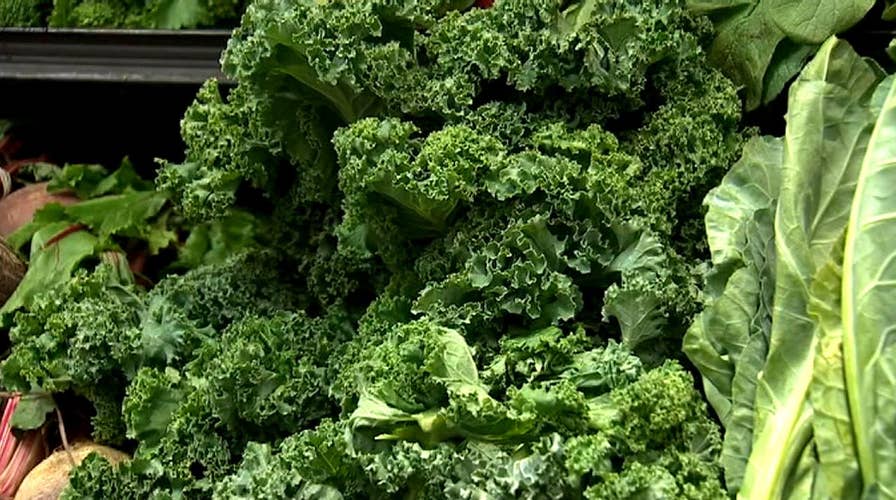Kale joins 'dirty dozen' list of foods containing pesticides
The Environmental Working Group ranking kale as No. 3 on its dirty dozen list when it comes to pesticide contamination.
After years as clean eating’s poster child, kale is now on the Dirty Dozen 2019, an annual list of the most pesticide-ridden fruits and vegetables, released Wednesday by the Environmental Working Group (EWG).
Scientists examined the dark, leafy green, and found that a whopping 92 percent of produce samples had pesticide residue, according to the report by the EWG, a watchdog organization that bases its Dirty Dozen lists off USDA and FDA testing.
CALIFORNIA BILL WOULD BAN SALE OF MAKEUP CONTAINING CANCER-CAUSING CHEMICALS, TOXINS
“Consumers should be alarmed,” Nneka Leiba, the director of EWG’s healthy-living science program, tells The Post. The last time kale was on the Dirty Dozen was in 2009 — well before the so-called superfood rose to popularity — when it ranked ninth out of 12. Per this new list, Leiba explains, nonorganic kale is now the third-most contaminated member of the produce aisle. Plus, one of the pesticides detected on the leafy green, called Dacthal, has been banned in Europe since 2009 for being a possible carcinogen.
Kale detractors say the leafy green’s downfall is well overdue.
“It’s kale’s time to move away from the spotlight,” says Food Network host Skyler Bouchard. She says that “anyone who’s into food could tell you that it’s already been on the way down” since its heyday when the green received a shoutout on Beyoncé’s sweatshirt in her 2014 music video for “7/11.”
This isn’t the first time kale’s gotten bad press. A highly publicized 2014 CDC study of leafy greens found that kale was only the 15th healthiest of the bunch.
ROUNDUP WEED KILLER SUBSTANTIAL FACTOR IN CALIFORNIA MAN'S CANCER, JURY RULES
Even so, Elena Besser, a Cooking Channel commentator, thinks the veggie’s startling new rank on the Dirty Dozen list will “make it way less appealing, and take away that superfood-mystical element to it.”
That said, the EWG doesn’t recommend eliminating kale from your diet entirely. It just wants people to stick to the organic stuff, to avoid pesticide contamination.
But you’ll have to lay down the green to get those greens: At Whole Foods, for instance, a bundle of organic kale costs $2.99, compared to the nonorganic bundle for $1.49. The difference between organic and nonorganic kale at Key Foods is a dollar, and at Trader Joe’s, it’s 30 cents.
Although some NYC salad spots, including Fresh & Co, a few Dig Inn locations and Sweetgreen, already sell organic kale, many others, including Chopt and Just Salad, do not — although reps from Just Salad tell The Post they’ll look into it.
If restaurants start to make the switch to organic, that could mean a rise in prices, says Koorosh Bakhtiar, managing partner at plant-based restaurant Jajaja in the Lower East Side.
CLICK HERE TO GET THE FOX NEWS APP
“If the cost stayed within a 5- to 10-percent range increase,” menu items wouldn’t go up in cost, says Bakhtiar, whose restaurant already soaks its nonorganic kale in a mixture of champagne vinegar, baking soda and lime juice to give it a deep clean. “But up to 30 percent, we’d maybe add a dollar. But then we’d brand it ‘organic,’ so people would be comfortable paying that extra dollar.
“It’s unfortunate because it’s not kale’s fault,” he says, referring to the rampant use of pesticides by farmers. “I think now, it’ll just be settled into ‘normal vegetable’ territory” — like arugula and spinach before it.
Bouchard, for one, isn’t mourning the much-hyped green.
“Whoever marketed kale probably retired at age 32 anyway,” she says.

